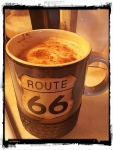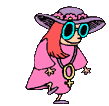Carroll O’Connor
Film Actor, Television Actor (1924–2001)
Quick Facts
Early Career
Carroll O’Connor was born on August 2, 1924 to a lawyer and a school teacher. His family moved from the Bronx to Elmhurst and then Forest Hills, Queens, where young O’Connor developed a strong interest in baseball. He entertained the idea of becoming a sportswriter and attended college at Wake Forest University in North Carolina in 1941.
He left college and returned to New York after the start of World War II and volunteered for the Naval Air Corps. The Navy rejected him partly because of his poor college grades, and he joined the United States Merchant Marine Academy instead as a midshipman. He was called out by officers for having a bad attitude and dropped out to join the National Maritime Union and become a merchant seamen.
After World War II, O’Connor returned to New York and worked for an Irish newspaper run by his family. He considered a career in journalism and returned to Wake Forest in 1948 and then took courses at Montana State University where he met another student, Nancy Fields, whom he married in 1951.
Still unsure about his career path, he took a trip to Dublin in 1950 and enrolled at the University College where he began to act, using the stage name George Roberts. He appeared in productions at the Dublin’s Gate Theater and performed Shakespeare at the Edinburgh Festival and throughout Ireland. He graduated in 1952 and wanted to pursue an acting career.
But when he returned to New York, he couldn’t find acting jobs so he worked as a New York City school teacher until he auditioned for a stage production of James Joyce’s Ulysses, produced by the actor Burgess Meredith. O’Connor won that role and then starred in an Off Broadway production of Clifford Odet’s Big Knife. O’Connor’s portrayal of a greedy studio boss drew attention and his acting career began to take off.
All in the Family
All in the Family / Archie Bunker’s Place Opening Credits
https://youtu.be/0d8FTPv955I
The “N” Word Unbleeped, All in the Family/ The Jeffersons
https://youtu.be/NuznDnDlTuI
All in the Family S3 E17 – Archie Goes Too Far
https://youtu.be/uDeNxdjh7tg
O’Connor was offered the role of the working-class bigot Archie Bunker in Norman Lear’s All in the Family, but he wasn’t confident it would be a success. He was living in Rome at the time and asked producers to buy a round-trip ticket so he could return when the show was cancelled. But the show became one of the highest-rated on television from 1971 to 1979 with a spin-off Archie Bunker’s Place that remained on the air until 1983.
O’Connor, who was a political liberal, took on the controversial role of the conservative bigot Archie Bunker when other actors, including Jackie Gleason and Mickey Rooney, had turned it down. His portrayal of Archie showed the character’s humanity with humor that connected to audiences and earned him four Emmy Awards.
Later Career & Death
After his award-winning portrayal of Archie Bunker, O’Connor starred in another hit series In the Heat of the Night, based on the 1967 movie. O’Connor played a tough Mississippi police chief from 1988 until 1992. He starred alongside his real-life son Hugh O’Connor, who played Officer Lonnie Jamison.
Tragically, Hugh, who had struggled for years with drug addiction, committed suicide in 1995. O’Connor dealt with the tragedy of losing his son by appearing in several public service announcements to raise awareness about drug addiction. He also lobbied the State of California to pass the 1997 Drug Dealer Civil Liability Act, also known as The Hugh O’Connor Memorial Law, which makes drug dealers civilly liable to families whose lose a child to illegal drugs and others injured by illegal drugs.
While dealing with the loss of his son, O’Connor underwent heart surgery in 1998 to clear blockage in a cardiac artery, and in June 2001, O’Connor suffered a fatal heart attack. Actor Martin Sheen delivered the eulogy at his funeral which was attended by hundreds of actors and fans who gave him a final standing ovation as 76 doves were released to represent every year of the actor’s life.
All in the Family
Premise
All in the Family revolves around Archie Bunker (Carroll O’Connor), a working-class World War II veteran living in Queens, New York. He is an outspoken bigot, seemingly prejudiced against everyone who is not a U.S.-born, politically conservative, heterosexual White Anglo-Saxon Protestant male, and dismissive of anyone not in agreement with his view of the world. His ignorance and stubbornness seem to cause his malapropism-filled arguments to self-destruct. He often responds to uncomfortable truths by blowing a raspberry. He longs for better times when people sharing his viewpoint were in charge, as evidenced by the nostalgic theme song “Those Were the Days,” the show’s original title. Despite his bigotry, he is portrayed as loveable and decent, as well as a man who is simply struggling to adapt to the changes in the world, rather than someone motivated by hateful racism or prejudice.
By contrast, Archie’s wife, Edith (Jean Stapleton), is a sweet and understanding, if somewhat naïve, woman who usually defers to her husband. On the rare occasions when Edith takes a stand she proves to be one of the wisest characters, as evidenced in the episodes “The Battle of the Month” and “The Games Bunkers Play“. Archie often tells her to “stifle” herself and calls her a “dingbat”. Despite their different personalities they love each other deeply.
They have one child, Gloria (Sally Struthers) who, for the most part, is kind and good natured, like her mother, but who also on occasion displays traces of her father’s stubbornness; she becomes more of an outspoken feminist as the series progresses. Gloria is married to college student Michael Stivic (Rob Reiner). Michael is referred to as “Meathead” by Archie and “Mike” by nearly everyone else. Mike is a bit of a hippie, and his morality is influenced and shaped by the counterculture of the 1960s. He and Archie represent the real-life clash between the Greatest Generation and the Baby Boomers. They constantly clash over religious, political, social, and personal issues. For much of the series, the Stivics live in the Bunkers’ home to save money, providing even more opportunity for the two men to irritate each other. When Mike finally finishes graduate school and the Stivics move out, it turns out to be to the house next door. The house was offered to them by George Jefferson, the Bunkers’ former neighbor, who knows it will irritate Archie. In addition to calling him “Meathead”, Archie also frequently cites Mike’s Polish ancestry, referring to him as a “dumb Polack.”
The show is set in the Astoria section of Queens, one of New York City’s five boroughs, with the vast majority of scenes taking place in the Bunkers’ home at 704 Hauser Street (and later, frequently, the Stivics’ home). Occasional scenes take place in other locations, most often (especially during later seasons) Kelsey’s Bar, a neighborhood tavern where Archie spends a good deal of time and which he eventually buys. The house seen in the opening is at 89-70 Cooper Avenue near the junction of the Glendale, Middle Village, and Rego Park sections of Queens. According to the US Postal Service, the official address is: 8970 COOPER AVE, REGO PARK NY 11374-
Cast
Main character
- Carroll O’Connor as Archie Bunker. Frequently called a “lovable bigot”, Archie was an assertively prejudiced blue-collar worker. Former child actor Mickey Rooney was Lear’s first choice to play Archie, but Rooney declined the offer because of the strong potential for controversy and, in Rooney’s opinion, a poor chance for success. Scott Brady, formerly of the western series Shotgun Slade, also declined the role of Archie Bunker, but appeared four times on the series in 1976 in the role of Joe Foley.
- Jean Stapleton as Edith Bunker, née Baines. It was Stapleton who developed Edith’s recognizable voice. Stapleton remained with the show through the original series run but decided to leave before the first season of Archie Bunker’s Place had wrapped up. At that point Edith was written out as having suffered a stroke and died off-camera, leaving Archie to deal with the death of his beloved “dingbat”. Stapleton appeared in all but four episodes of All in the Family and had a recurring role during the first season of Archie Bunker’s Place. In the series’ first episode, Edith is portrayed as being less of a dingbat and even sarcastically refers to her husband as “Mr. Religion, here…” after they come home from church, something her character wouldn’t be expected to say, later.
- Sally Struthers as Gloria Stivic, née Bunker. The Bunkers’ college-age daughter was married to Michael Stivic. Gloria frequently attempted to mediate Archie’s and Michael’s arguments. The roles of the Bunkers’ daughter and son-in-law (then named “Dickie”) initially went to Candice Azzara and Chip Oliver. However, after seeing the show’s pilot, ABC, the original production company, requested a second pilot expressing dissatisfaction with both actors. Lear later recast the roles of “Gloria” and “Dickie” with Struthers and Reiner. Penny Marshall (Reiner’s wife, whom he married in April 1971, shortly after the program began) was also considered for the role of Gloria. During the earlier seasons of the show, Struthers was known to be discontented with how static her part was, frequently coming off as irritating and having only a few token lines. As the series continued Gloria’s character became more developed, satisfying Struthers. Struthers appeared in 157 of the 202 episodes during the first eight seasons—from January 12, 1971 to March 19, 1978. She later reprised the role in the spin-off series Gloria, which lasted for a single season in 1982-83.
- Rob Reiner as Michael Stivic. Gloria’s Polish-American hippie husband was part of the counterculture of the 1960s. He constantly sparred with Archie (in the original pilot, he was Irish-American). Michael was, in many ways, as stubborn as Archie, even though his moral views were generally presented as being more ethical and his logic somewhat sounder. Though this was true, he was generally portrayed in a more negative light than Archie; Archie was portrayed in a more sympathetic sense, while Michael was portrayed as loudmouthed and at times, demanding. He consistently tried to prove himself correct (as evidenced in the episode “The Games Bunkers Play”) and seemed desperate to convince people that his way was the right way to go all the time, even more than Archie, who gave up giving advice about his way when there was no point. This would occasionally, if not often, end him up in conflict with his friends and wife. For his bullheadedness, Stivic was sometimes criticized for being an elitist. He also struggled with assumptions of male superiority. He spoke of believing in female equality, but often tried to control Gloria’s decisions and desires in terms of traditional gender roles. While Archie was a representative of supposed bigotry and demonstrated the lion’s share of the hypocrisy, Michael, on many occasions, showed his own. As discussed in All in the Family retrospectives, Richard Dreyfuss sought the part but Norman Lear was convinced to cast Reiner. Reiner appeared in 174 of the 202 episodes of the series during the first eight seasons—from January 12, 1971 to March 19, 1978. Reiner is also credited with writing three of the series’ episode1]
- Danielle Brisebois as Edith’s 9-year-old grandniece, Stephanie Mills, who is a regular throughout the 9th season. The Bunkers take her in after the child’s father, Floyd Mills, abandons her on their doorstep in 1978 (he later extorts money from them to let them keep her). She remained with the show through its transition to Archie Bunker’s Place, and appeared in all four seasons of the latter show.




























































































































































